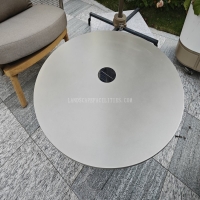Welcome to the website for landscape facilities products and knowledge.
What are the most common issues with warping in composite trash cans and how are they addressed?
Warping is a frequent problem in composite trash cans, often caused by environmental factors, material imperfections, or poor manufacturing. The most common issues include:
1. Thermal Expansion: Composite materials expand and contract with temperature changes, leading to warping over time. This is especially prevalent in outdoor trash cans exposed to direct sunlight.
2. Moisture Absorption: Some composite materials absorb moisture, causing swelling and distortion. High humidity or frequent rain exacerbates this issue.
3. Structural Weakness: Low-quality composites or thin designs may lack rigidity, making them prone to bending or warping under heavy loads.
4. UV Degradation: Prolonged exposure to UV rays weakens the material, leading to surface cracks and warping.
Solutions to Address Warping:
- Choose High-Quality Composites: Opt for trash cans made from UV-resistant, moisture-proof composites with reinforced structures.
- Proper Placement: Keep trash cans in shaded areas to minimize thermal stress and UV exposure.
- Regular Maintenance: Clean and dry the trash can regularly to prevent moisture buildup.
- Reinforcement: For existing warping, use braces or heat to gently reshape the material, or replace severely damaged units.
By understanding these issues and implementing preventive measures, you can extend the lifespan of your composite trash cans and maintain their functionality and appearance.
Related search:

Recommendation
Outdoor stainless steel table with solar-powered ambient lighting feature - excellent design.